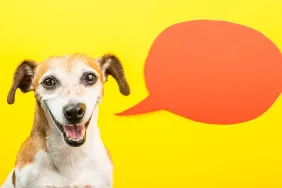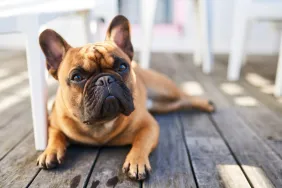Is chewing a destructive behavior? Here’s the simplest answer: Only if your dog is chewing on the wrong thing. So give them something that’s okay to chew.
Your dog’s chewing might not just destroy your home and belongings. It could also be dangerous, as many objects present choking hazards, cause gastrointestinal blockages, or break into sharp pieces that can hurt your pup’s insides.
That said, you shouldn’t want to stop your dog from chewing entirely. Puppy chewing is an important part of the teething process. As adults, dogs often chew for fun or to relieve boredom. Chewing or tearing things up (like paper) can also be a displacement behavior — a way to release pent-up energy or stress.
Making sure your dog chews only on appropriate things will help keep them — and your belongings — safe. Here are a few ways you can redirect your dog’s chewing and put a stop to the unwanted behavior.
Puppy- And Dog-Proof Your House
As with any type of behavior you wish to change, one of the most important things to do is manage the environment.
Most of us are familiar with “puppy proofing” our houses. We learn to put shoes in the closet, and put pups in the crate when we’re not actively supervising them.
But we often forget that many adult dogs need the same type of management to keep them out of trouble.
Look around for any unsafe items that might be in your dog’s reach. If you plan to leave your pup alone in your home, make sure they have a safe space to stay where they can’t find inappropriate objects to chew.
Give Your Dog A Chew Toy Instead
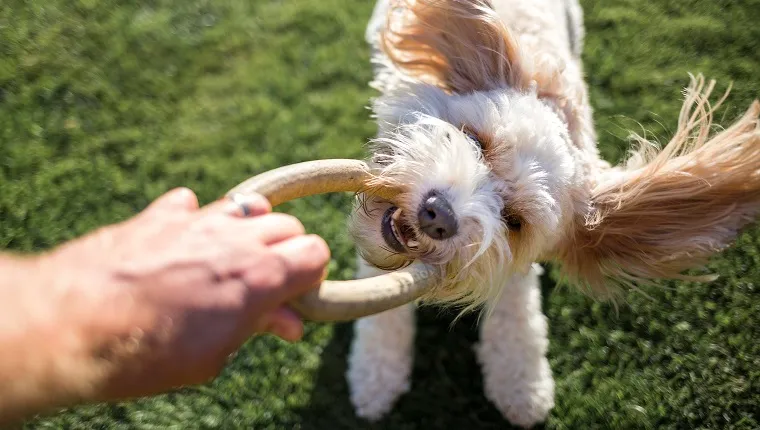
If your dog attempts to chew on an inappropriate item while in your presence, simply interrupt the behavior and redirect them to an appropriate chew toy.
It can be helpful to have a stuffed Kong toy in a Ziplock bag in your freezer so you can quickly produce it when needed. Stuffing it with dog-safe peanut butter or treats may help give your dog an incentive to stick with the toy instead of other objects.
Many pups have certain times of day when they are more likely to chew, so you can head this behavior off at the pass if you choose this time of day to give the dog an approved chewie.
Use Bad-Tasting Repellents And Sprays
You can keep puppies and adult dogs away from some items by using impersonal correction, preferably where the “environment” does the correcting.
For example, spray items with Bitter Apple spray or other dog repellent to keep your pup away. These items are safe for dogs, but they taste and smell unappealing.
If something is particularly unpleasant, the dog will most likely make the decision not to repeat that behavior.
Give Your Dog Plenty Of Exercise
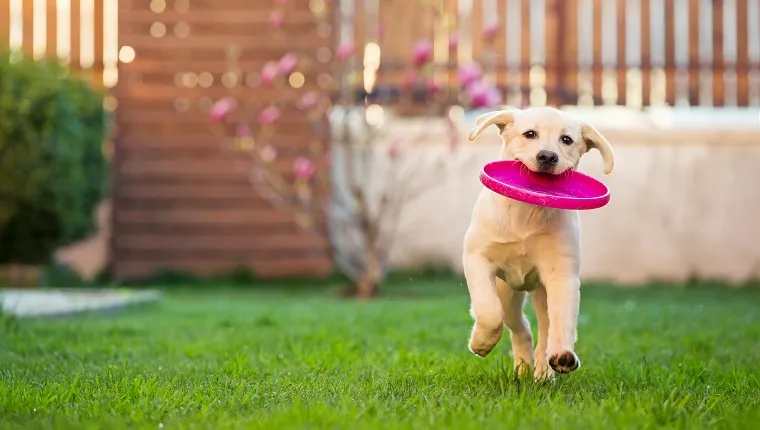
Exercise is vitally important for dogs prone to inappropriate chewing or other destructive behaviors. A tired pup will be less likely to have the energy to cause problems.
Exercise also produces endorphins, which have a calming effect. In fact, it is these endorphins that are stimulated by chewing, so if your dog is not getting enough exercise, they may unconsciously be seeking to replace needed endorphins by releasing pent-up energy through chewing.
Making sure your pooch gets enough exercise will go a long way in reducing boredom, anxiety, and attention-seeking behavior.
Make A Vet Appointment
Occasionally, chewing or tearing things up can be a symptom of a more serious problem, such as separation anxiety. This can happen when dogs feel extremely anxious about being left alone without their humans.
If you suspect separation anxiety, the first thing you need to do is schedule an appointment with your veterinarian. They can help you find out if it’s separation anxiety or another issue.
Treatment for separation anxiety can include changes in diet and exercise, training, medication, or a combination of therapies. It’s not always easy to treat or cure, and it often takes time to make progress. But addressing it should help with destructive chewing behaviors.
There are other medical conditions that can cause dogs to feel compelled to chew. In fact, pica is a condition where dogs feel the need to eat non-food items, and pica can also be a symptom of underlying medical issues.
That’s why it’s so important to talk to your vet. They can diagnose your dog’s condition, prescribe treatment, and even give advice about correcting unwanted behaviors.
Be Gentle!
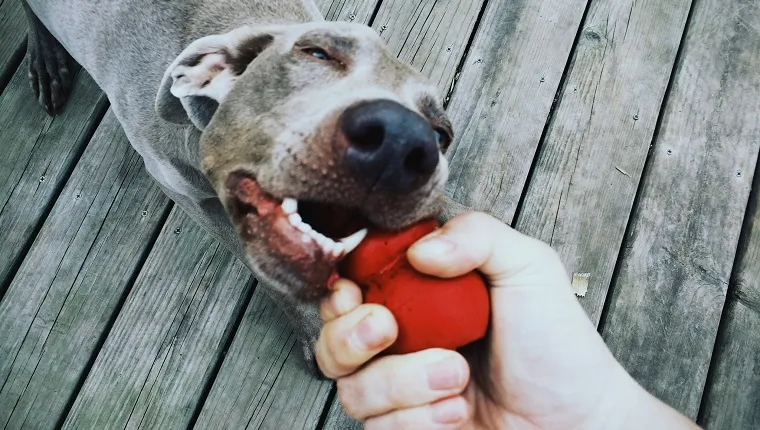
A few training books are still on the market that advocate inhumane methods for stopping destructive behaviors, such as putting duct tape around a pet’s mouth or physically hitting a dog. Needless to say, there is no excuse for such corrections.
Not only are they extremely unfair, they’re ineffective. The use of proper management for instance, crating a dog when they’re not under your direct supervision, along with proper exercise, reduces the vast majority of destructive behavior problems.
Do you have a dog at home who chews? What techniques do you use to keep your dog and your belongings safe? Let us know in the comments below!
Click the bold links in the article to shop and support our content!






